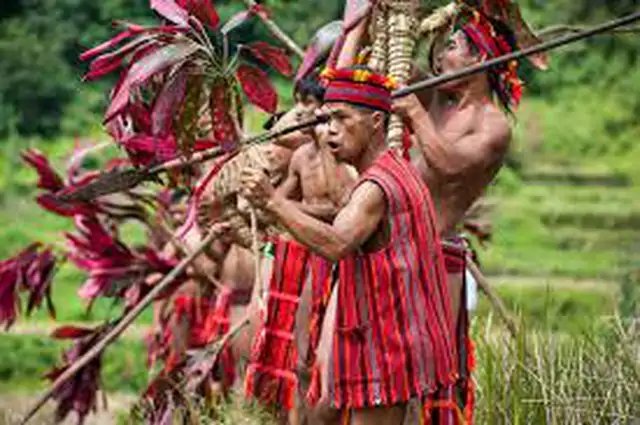Igorot People

Igorot People

Igorot, (Tagalog: “Mountaineer”) any of various ethnic groups in the mountains of northern Luzon, Philippines, all of whom keep, or have kept until recently, their traditional religion and way of life.
Some live in the tropical forests of the foothills, but most live in rugged grassland and pine forest zones higher up.
The Igorot numbered about 1.5 million in the early 21st century.
Their languages belong to the northern Luzon subgroup of the Philippine languages, which belong to the Austronesian (Malayo-Polynesian) family.
The Igorot peoples are Austronesians.
They were known in earlier days for their wars and practice of headhunting.
The Spaniards forcibly partially subdued them during the colonial occupation of the Philippines, that process being completed during the period of U.S. hegemony.
Ethnologists distinguish about 10 main ethnic groups, each with its own dialect and culture.
There are also variations within these groups.
Two broader groupings may be made of the Igorot as a whole: one, by far the larger, comprises the peoples of the higher country who cultivate wet rice, mostly in steplike terraces on the mountainsides; the other comprises peoples of the lower rainforest areas, who grow dry rice in seasonally shifting gardens.
Within the first group the Nabaloi or Ibaloi, Kankanay (Kankanai), Lepanto or northern Kankanay, Bontoc (Bontok), southern Kalinga, and Tinggian nearly all live in populous villages, but one ethnic unit, the Ifugao, has small farmsteads of kinsmen dotted throughout the rice terraces.
The second group—the Gaddang, northern Kalinga, and Isneg or Apayao—are sparsely settled in hamlets or farmsteads around which new gardens are cleared as the soil is worked out; some Gaddang live in tree houses.
Cultural elements common to the Igorot peoples as a whole include metalworking in iron and brass, weaving, and animal sacrifice.
They believe in spirits, including those of ancestors, and have complex rituals to propitiate them.
There are no clans or tribes, and political organization is generally limited to the village level.
Kinship is traced on both the paternal and the maternal sides, extending as far as third cousins.